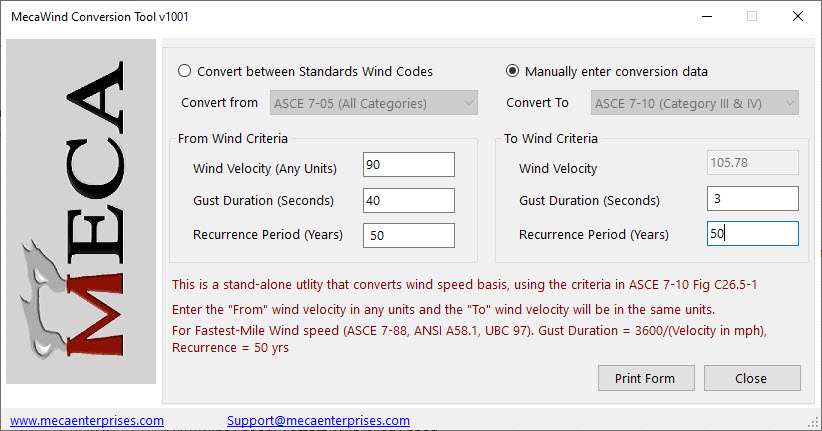Fastest-Mile Wind Speed

Many times we have the difficult task of analyzing a structure that was designed long ago. In such cases, you may find that the wind speed used may appear significantly lower than the wind speed you would expect for that location using today’s standards. In these situations, it’s always important to understand the definition of wind speed used back then compared to today. Not understanding this can lead to extremely unconservative results. The Fastest-Mile Wind speed is a basis that was popular in 1988 and earlier, and we are going to explain how to convert this into something you could use with today’s standards.
What is Fastest-Mile Wind?
The old wind standards (ASCE 7-88, ANSI A58.1 and UBC 97) defined wind speed as the “Fastest Mile Wind” velocity. The Fastest Mile, is not some record set by Olympic Track Star Usain Bolt (shown in the post image above), but rather a definition for wind speed that was used for many years in wind standards. It is defined as follows:
“The wind speed corresponding to the whole mile of wind movement that has passed by the 1 mile contact anemometer in the least amount of time.” per US-EPA AP-42
I’ve read this definition many times over the years, and I’m still not sure I understand it. Fortunately, I don’t need to understand the definition as long as I know what to do with the fastest-mile wind velocity.
Mean Recurrence Interval (MRI):
Today’s standards do not use fastest-mile wind speed. For example, ASCE 7-16 uses a 3 second gust at an Mean Recurrence Interval (MRI), which depends upon the structural category. This is basically a period of time over which you look at data to determine a wind speed. I understand this as a wind speed that occurs once every 300 yrs (ASCE 7-16 Category I) would be lower than a wind that occurs once every 3,000 years (ASCE 7-16 Category IV). Looking at the corresponding data in the table, you can see that as you increase the category, then the MRI gets larger and produces more conservative (higher) wind speeds.
ASCE 7-05 was a little different because in that standard the MRI was 50 yrs for all wind speeds, but a factor called the “Importance Factor” was used to adjust the pressures and increase them with the higher categories.
ASCE 7-16:
Category I – MRI = 300 yrs
Category II – MRI = 700 yrs
Category III – MRI = 1,700 years
Category IV – MRI = 3,000 years
ASCE 7-10:
Category I – MRI = 300 yrs
Category II – MRI = 700 yrs
Category III and IV – MRI = 1,700 yrs
ASCE 7-05:
All Categories – MRI = 50 yrs (Importance factors used for different categories)
Convert Fastest-Mile Wind:
To convert from fastest-mile wind speeds to something useful in today’s standards, we make use of a figure contained in the commentary section of ASCE 7-05. In ASCE 7-95, this was Figure C6-1. Some version of this same graph exists in every version of ASCE 7. Please refer to the corresponding calculations to show an example of how one would convert from 90 mph using fastest-mile wind speed to 3 second Gust and 50 year MRI. Using this graph, we determine that the equivalent wind velocity for a 50 yr MRI and 3 sec gust would be 107 mph. This would be a wind speed that we would use if we were following ASCE 7-05.

Is there an Easier way?
3) Open Meca Wind Conversion tool and enter this value into the gust, and 50 yrs in the recurrence period. (See below).
The result from the tool is 106 mph and we got 107 mph in the our previous calculation above. Since we are reading values from a graph, there can be some slight variation in the values obtained due to inaccuracies.

What about Other Codes?
At Meca, we work with wind codes from around the world and it’s often necessary to try to convert wind speeds from one code to another. In order to do this, we have summarized the following parameters for our use and we offer them here for your convenience. You are responsible for verifying the accuracy of these values before you use them, but they might prove useful to you in certain circumstances.

